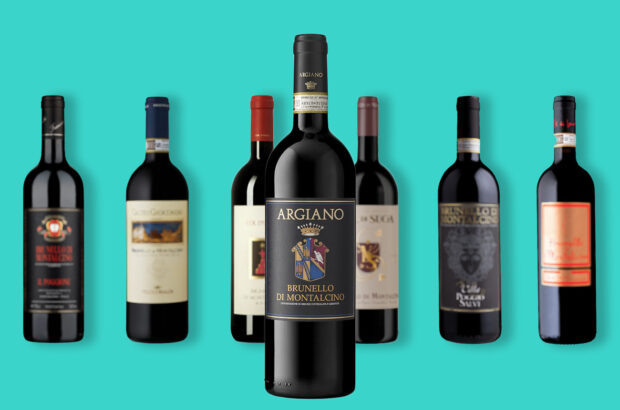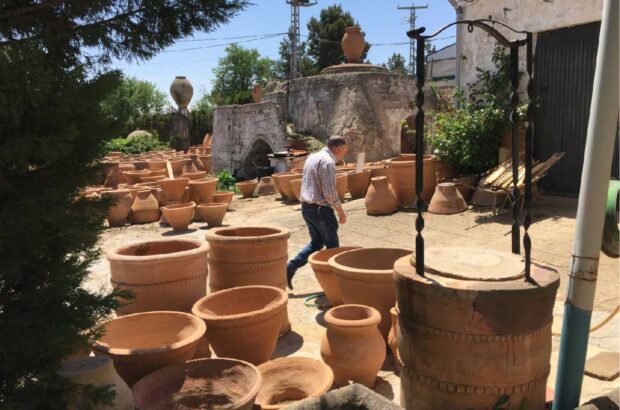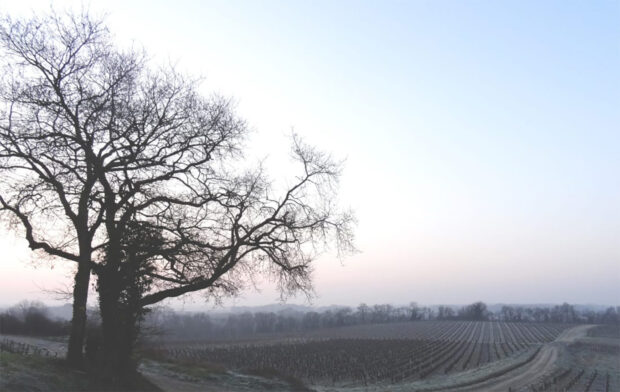‘In my own time I have seen the reputation of this great wine advance by leaps and bounds; always esteemed, it now is reverenced, and if it continues its upward career it will ere long be recognised as the greatest of all clarets.’ So wrote the mercurial Irish barrister and wine raconteur, Maurice Healy, back in 1940 in his book Stay Me With Flagons. Sixty years on, Cheval Blanc’s star is still in the ascendant. Healy’s apotheosis vintage, the 1921, has been joined by a string of other outstanding wines (1947, 1949, 1964, 1975, 1982, 1990, 1998) and, of greatest import, the originality of this Saint-Emilion premier grand cru classé ‘A’ has been assured.
It is perhaps this, the unique aspect of Cheval Blanc, that holds the most appeal. The wine is an enigma. Deeply coloured in youth and flatteringly fruity and suave, it has an accessibility and allure from the outset that belies its ability to mature over the years into something greater still.
Wine Legend: Cheval Blanc 1947
The key to the puzzle lies in two aspects of this great estate, the soil and the choice of grape varieties. The first, an exclusive mix of clay, gravel and sandy soils and the second, a high proportion of Cabernet Franc (58%) in the vineyard alongside Merlot (42%), are responsible for the character of the wine.
Cheval Blanc is situated in the north-west corner of Saint-Emilion, a stone’s throw from Pomerol and châteaux L’Evangile and La Conseillante, in what is generally known as the Saint-Emilion Graves. Established in the 1830s by the owner of Château L’Evangile, Monsieur Ducasse, the estate was essentially created on land purchased from Château Figeac, the neighbouring property to the west, with the addition of some smaller parcels including a tiny piece of L’Evangile. By 1870 it had acquired its definitive form, including an important system of drainage, and had passed into the hands of Ducasse’s son-in-law, Laussac-Fourcaud. The latter’s son, Albert, changed the name to Fourcaud-Laussac and the property remained in the ownership of this family until 1998 when it was purchased by Bernard Arnault, chairman of LVMH (Louis Vuitton Moët Hennessy), and Belgian businessman Baron Albert Frère.The choice of a large percentage of Cabernet Franc, or Bouchet as it is known locally, appears to have been made at the creation of the estate. By the late 18th century this variety had demonstrated that it was better suited to the cooler, damper conditions of the Right Bank than the later ripening Cabernet Sauvignon and was generally well established in the vineyards of Saint-Emilion and Pomerol. Malbec also figured initially but has now been discarded in favour of Merlot as Cabernet Franc’s sole partner on the 37 hectare (ha) estate.
On taking control of the property in 1991, managing director Pierre Lurton and viticultural and oenology consultant Kees Van Leeuwen decided to implement a thorough analysis of the soil. The results indicated three distinct soil types: 40% predominantly clay, 40% predominantly gravel and 20% predominantly sand. The importance of clay, which appears in patches all over the property, was a particular surprise. ‘It seems extraordinary that great wines can be made on these heavy soils but due to certain agronomic defects the vigour of the vines is low, yields moderate and the ripening process quite rapid,’ explains Van Leeuwen.Micro-vinifications of the two grape varieties grown on the three different soil types provided further data. Wines from the clay soils, which provide small, concentrated berries, were rich and powerful with full, fleshy tannins similar in style to Pomerol. Those from the gravel soils were firmly tannic with a more complex aromatic range, while wines from the sandy soils had neither the colour nor tannic structure of the others. ‘The importance of terroir was conclusive as it was difficult to separate the two grape varieties on the various soils,’ says Van Leeuwen.
The results of these experiments have since induced even greater rigour in the winemaking process. Each parcel of vines has been clearly defined so that the grapes can be vinified separately, making the process of selection and rejection for the grand vin even more precise. In general, though, it is mainly wines from the gravel and clay soils that form Cheval Blanc, with occasionally a little Merlot from the sandy soils in great years for added aroma. Cabernet Franc from the same soils has a tendency to show an overt herbaceous character and often doesn’t even make the second label, Le Petit Cheval, launched in 1988. Another decision has been to keep the individual expression of the vintage. Hence the blend can change from 1996’s 56% Cabernet Franc, 44% Merlot to 25% Cabernet Franc, 75% Merlot as seen in 1997. Cabernet Franc, however, remains the hallmark of Cheval Blanc, and great efforts have been made to understand and improve the performance of this problematic variety. Yield is one crucial factor, overcropping providing poor results. ‘Forty hectolitres/ha (hl/ha) is the absolute limit for Cabernet Franc so we have to be more severe with this variety than the Merlot,’ says Van Leeuwen. The other problem is that Cabernet Franc, like Pinot Noir, has great genetic variability and a lot of the clones available in Bordeaux are simply not very good.
The solution at Cheval Blanc has been to propagate from the older and better vines on the estate for a steady programme of replanting. This has also included grafting in the vineyard where the existing clone has found to be less than satisfactory. Other changes in the vineyard have included a more ecological approach to vine cultivation with the abandonment of chemical herbicides, limited use of insecticides and a more rational approach to spraying for cryptogamic disease. The density for new plantings is also being gradually increased, and will be 8,000 vines/ha this year. The move is qualitative to produce greater competition between the vines.During the harvest, the grapes are hand picked and placed in small perforated crates to avoid premature crushing before being sorted at the cellars. Vinification is traditional with generally a gentle approach to extraction. Both cement and stainless steel tanks are used for fermentation with preference given to the cement as there is a greater range of volumes to accommodate the various parcels of vines. Temperatures do not exceed 32˚C and during the alcoholic fermentation the wine is pumped over for a brief period four times daily. In all, the wine is left to macerate on the skins for an average of three weeks before being run off. Ageing for the grand vin, which on average represents 55% of the production, takes place in 100% new oak barrels. The wine matures for up to 18 months during which time it is racked every three months and fined using fresh egg whites. Bottling takes place without filtration. Vintages prior to 1973 probably show more bottle variation as bottling was still being done directly from barrel.
As in all great estates the human factor has also played a significant role at Cheval Blanc. The Fourcaud-Laussac family provided continuity for 150 years while Pierre Lurton’s steady hand at the helm has been implicit in the success of recent years. What then of the new Arnault-Frère ownership? ‘They are receptive to new ideas and are willing to provide the means to obtain the qualitative objectives we have in mind,’ says Pierre Lurton. The title of ‘greatest of all clarets’ is open to debate, but clearly Cheval Blanc’s career is still on an upward curve.
Tasting notes
1999 (cask sample)
Slightly more Merlot (55%) in the blend. Deep colour. Sweet, ripe fruit on the nose. Suave texture, tannins rounded but firm, persistent fruit. A very good 1999.
1998 (cask sample)
A 50:50 blend of Cabernet Franc and Merlot. Deep, opaque hue. Elegant, dark-berried fruit at perfect pitch. Rich, velvety texture, full and fleshy, sweet, ripe, persistent tannins. A potentially great Cheval Blanc.
1997
A majority Merlot (75%). Medium to full colour. Bright, aromatic fruit. Quite forward in style. Smooth, fine texture, balanced, medium intensity. Lacks a little depth and length.
1986
Extraordinary for such an abundant vintage (61 hectolitres/ha!) Medium-full hue with a little brick at the rim. Quite concentrated on the nose with a hint of humus and cassis. Palate velvety and sweet, well balanced with freshness (mineral notes). Perhaps a little fluid. Drinking well now.
1983
Colour shows evolution. Nose quite vinous with notes of leather and prune. Warm (alcohol) and sweet on the palate with a Mediterranean nuance (leather and prune again) but good balancing acidity. Tannins slightly abrasive. Drink now.
1982
Early harvest (20th September–2nd October) with a natural alcohol potential of 12.8% abv. Beautifully smooth, unctuous wine. Colour still intense at the core, orangey towards the outer rim. Complex, powerful bouquet with notes of dark, jammy fruit, spice, tobacco leaf and caramel. Palate round and velvety with extraordinary depth of fruit. Low acidity. Tannins well integrated. Long finish. Still good ageing potential.
1979
Lighter, more delicate style that lacks a little volume. Evolved, brick-amber hue. Slightly herbaceous, minty nose.
1978
A firmer style with good weight and acidity. Colour full with brick red at the rim. Fresh and minerally on the nose with a note of roasted coffee. Palate sweet, quite suave with attractive cherry fruit. Fresh finish.
1975
Superb wine produced from a yield of 21 hl/ha. Still a good rich colour, brick red and cherry. Wonderfully smoky, complex nose with notes of jammy fruit and spice. Palate rich and powerful with abundant ripe tannins. Finish firm and cedary. Still considerable ageing potential. Must be the pick of this vintage in Bordeaux.
1971
The most surprising wine of the tasting. Yield of only 18hl/ha. Orangey hue. Amazingly vibrant nose with distinctive notes of citrus fruits (mandarin, grapefruit), mint and spice. (Apparently this was a vintage marked by the presence of noble rot in the vineyards.) Palate fine, full and complex with the trademark unctuousness of Cheval Blanc. Still good grip.
1970
Good colour, but showing evolution. Nose rather leafy and herbaceous. Palate more attractive, medium bodied with a soft, round texture and certain grip. Drink now.












